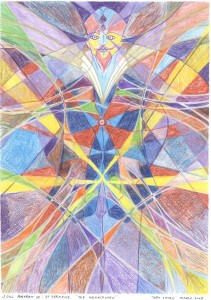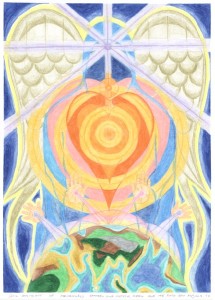Hi Everyone,
This week’s article looks at the a perspective on happiness and wellbeing that I have been finding particularly useful over the last couple of weeks, so much so that I felt I would like to pass it on to people, I hope you enjoy it!
Yours in the spirit of inevitable peace,
Toby
 Article of the Week:
Article of the Week:
The Inevitability of Peace, Happiness and Fulfillment
The world can seem a difficult place to find fulfillment and give happiness
Even with the best intentions sometimes finding and giving happiness can see like a difficult and intractable process. It seems like one personal problem that we solve only gives rise to another, people we are trying to help sometimes turn around and stab us in the back or refuse to take any constructive advice. The world at large seems unfair, with some like us enjoying wealth and affluence easily whilst vast tracts of the population remain stuck in absolute poverty.
Looking at life from these perspectives it can be tempting to give up on the prospect of ourselves or the world at large ever finding a lasting solution to our own challenges, let alone to the collective problems that we face.
From a spiritual perspective fulfillment and peace is inevitable
Why does spirit bother creating anything in the Universe, worlds, planets, living beings and the like? The traditional answer found in the great wisdom traditions of the world is essentially that spirit engages in the process of creation for fun, for amusement. In the Hindu tradition this idea is called “lila”, meaning sport, pastime, or play. Spirit creates the diversity of the universe from its own inherent unity as a celebration of itself and to alleviate apparently a certain cosmic sense of boredom. What will the end result of this play and sport be? Inevitably it will be a return to the natural and inherent peace, happiness and fulfillment of unified spirit.
If we see our own life and world from this perspective, as the sport, pastime or play of spirit, underpinned by the inherent unity and loving nature of spirit, then this enables us to find a point of equilibrium in the chaos of our daily life and complex world, with all of its uncertainty and intractability.
That fulfillment is not somewhere in the distant future, it is here and now
One of the main aims of meditation in the above context is to bring home a subjective and experiential realization of this inevitable happiness, fulfillment and peace. By realizing this inevitably, we start to experience it in our lives right now, as an underpinning current of energy that gradually pervades everything we do. You could say that having access to this current of energy in everything that we do is one of the markers of success in our daily meditation practice.
Meditating on the inevitability of happiness
If you are interested in trying to integrate this perspective more into your daily life and meditation practice, here is a simple method you can use. Sitting quietly and contemplatively, focus on the words:
“At the end of the life-paths and trials of every living being lies inevitable peace, happiness and fulfillment”.
Then spend a bit of time just breathing and relaxing into the recognition that however difficult things seem for ourself, our loved ones and the world at large, the only final endgame is the return to the peace, happiness and fulfillment of spirit.
During your contemplation and afterward, whilst going about your daily life, try and feel this final peace, happiness and fulfillment as a presence in your life right now. As Thich Nhat Hanh is so fond of saying “The Pure Land is Now or Never!”
© Toby Ouvry 2012, you are welcome to use or share this article, but please cite Toby as the source and include reference to his website www.tobyouvry.com
 Six Aspects of Sacred Sexuality
Six Aspects of Sacred Sexuality
 Article of the Week:
Article of the Week: Meditation Class 14th December:
Meditation Class 14th December:

